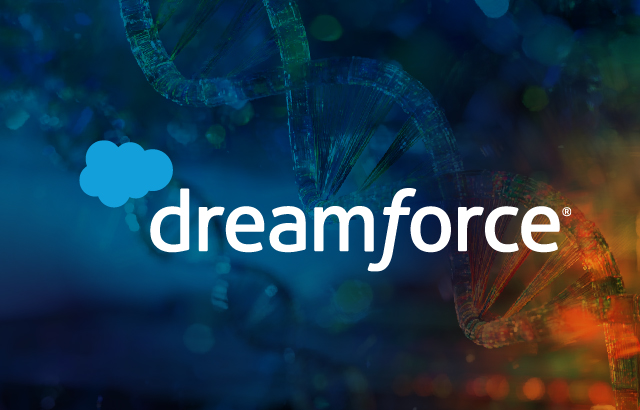If you blinked during Dreamforce this year, you might have missed that Salesforce quietly signaled a major shift in how enterprises, including life sciences organizations, will operate in the years ahead.
AI isn’t a feature anymore; it’s the architecture.
For pharma, this evolution means moving beyond “AI copilots” whispering in our ear to AI agents acting as true digital coworkers. These are agents built to collaborate across functions, streamline processes and elevate human expertise rather than replace it.
Let’s unpack what that transformation looks like and why it matters for pharma, especially for teams navigating compliance, content and complexity every single day.
Agents Are Your New Digital Coworkers (and They Actually Like Doing the Boring Stuff)
Salesforce and Anthropic made it clear: agents aren’t “assistants” anymore. They’re autonomous digital workers, full-fledged teammates capable of reading data, following rules, escalating issues and logging every action for audit.
Think of them as the colleague who:
- Never sleeps
- Never forgets where the data lives
- Never hits “Reply All”
These agents excel at the repetitive, process-heavy tasks that consume valuable human headspace, such as classifying content, summarizing rep calls or triaging MLR submissions. This allows humans to focus on strategic storytelling and high-judgment work.
As EVERSANA INTOUCH’s CEO and EVERSANA’s Chief Innovation Officer Faruk Capan often notes: “AI will not replace your job, but people using AI will.”
Pharma takeaway: AI agents are here to elevate us, not replace us. The “pharma gray matter” remains essential for nuance and compliance, while AI agents simply reduce the manual lift.
Agent-First Architecture: Built Around Agents, Not Bolted On
In the old world, we built systems for humans and sprinkled in a little AI on top. In the new world, AI is the foundation.
Salesforce’s agent-first architecture embeds AI across its ecosystem, designing the platform so agents live in it rather than on it.
With the introduction of Agentforce 360, agents are integrated directly into the core platform. Every major cloud app — including Sales, Service, Health and Life Sciences Cloud — now supports agent endpoints, policy engines and governance frameworks right out of the box.
These agents operate with clear:
- Job descriptions
- Boundaries and escalation paths
- Digital “paper trails” for governance and audit
Pharma takeaway: This is a shift from experimenting with AI to intentionally designing workflows where agents have defined roles and responsibilities, just like MLR reviewers or field reps.
With our announcement of the AI Agency Platform, built in partnership with Google, we see powerful opportunities to connect client AgentForce systems to execute downstream CRM actions and enhance services through agent-to-agent interactions. End-to-end agentic workflows are no longer a future vision; they are now a reality!
Today, agents can route medical inquiries, flag off-label content, pre-assemble MLR packets and seamlessly hand work off for human review — accelerating processes while maintaining compliance.
Zero-Copy Data: The Real Hero Nobody’s Talking About
Dreamforce revealed an unsung breakthrough, particularly important for regulated industries: zero-copy data access.
Salesforce’s new Data 360 (think MuleSoft with an AI glow-up) announced 108 zero-copy connectors launching in 2026.
Zero-copy means your data stays right where it is — in Snowflake, AWS, Azure, Oracle and beyond — and the agents access it in real time through secure APIs, without duplicating or removing it.
Pharma takeaway: This is a game-changer. It reduces operational and compliance risk, keeps data protected within existing infrastructures and enables agents to work across systems seamlessly.
What’s Next: DAM + MLR Automation
Another standout announcement: Salesforce confirmed that Digital Asset Management (DAM) and Pharma MLR automation are on track for general availability in late 2026.
These capabilities promise to unify the content and compliance lifecycle by enabling agents to:
- Link assets directly to approved claims and evidence data
- Route materials through MLR workflows with built-in guardrails
- Generate complete audit trails from first draft to final deployment
Pharma takeaway: While still in development, these advancements signal a future where content-to-compliance processes can operate within a single, governed ecosystem, reducing cycle times and increasing visibility.
While Salesforce’s automation layers will enhance the broader enterprise platform, EVERSANA ORCHESTRATE™ MLR integrates seamlessly into that ecosystem, connecting high-compliance workflows like claims validation and regulatory review directly into CRM-embedded distribution workflows.
In short: Salesforce provides the platform; EVERSANA delivers the specialized integration and expertise to bring it to life.
Organizations can begin preparing now by modernizing their content architecture, including claims databases, metadata strategies and taxonomy structure, to ensure readiness for this next generation of intelligent workflow automation.
The Bottom Line
Dreamforce 2025 underscored a simple truth: AI is no longer a bolt-on enhancement but an architectural cornerstone. For pharma, the opportunity lies in building systems and teams that integrate AI agents responsibly and efficiently. By pairing human expertise with scalable automation, companies can boost productivity, strengthen compliance and accelerate innovation to patients.
If you’re interested in how these tools are being applied across life sciences — or how EVERSANA INTOUCH helps clients implement and optimize them — we’d love to share our perspective. Connect with us to explore how we can drive impact together.

